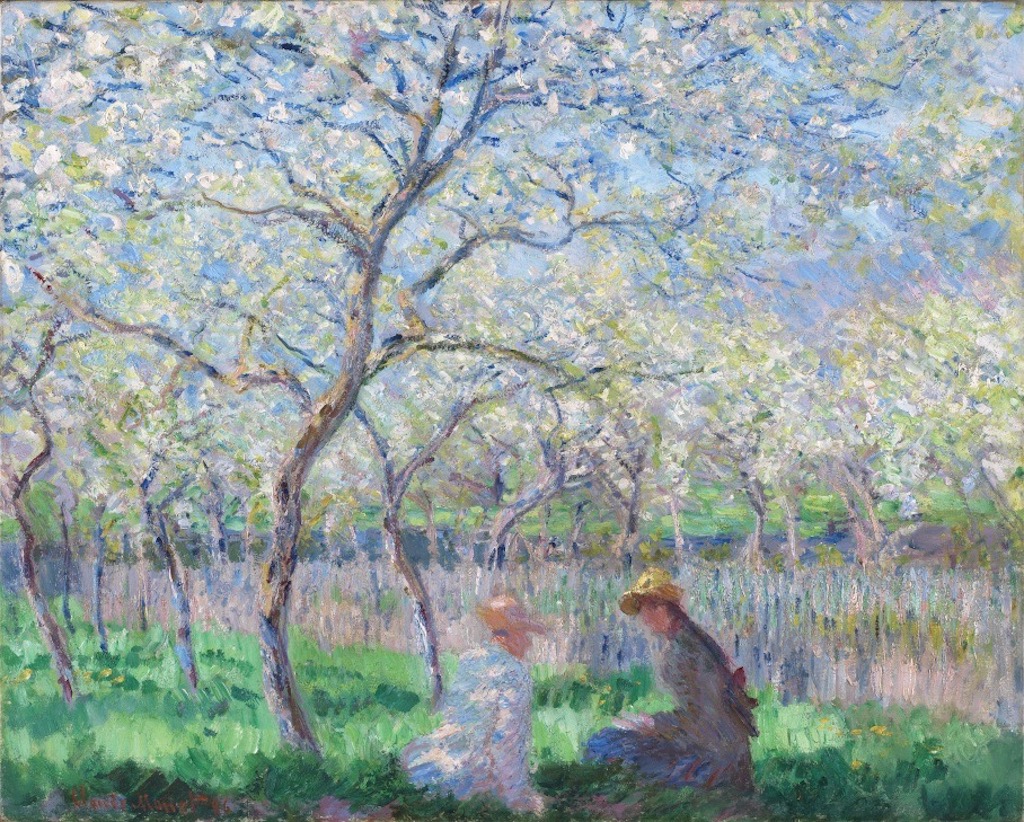Look, think, do: Springtime
Description of this object or artwork
Springtime was painted by Claude Monet in his garden in Giverney, France, on a beautiful spring day in 1886. It shows his 18 year old step daughter Suzanne Hoschede talking to his son Jean Monet.
The painting is a good example of the revolutionary painting technique that Monet and other Impressionist artists developed. Monet often worked outside in the open air, and so the paint is applied quickly to capture the changing effects of the sunlight. Monet described his interest in light and colour,
‘When you go out to paint, try to forget what object you have before you- a tree, a house, a field, or whatever. Merely think here is a square of blue, here an oblong of pink, here a streak of yellow, and paint it just as it looks to you, the exact colour and shape, until you have your own naïve impression.’
Monet experimented with contrasting and complementary colours to create different effects. In this painting the yellowy green of the grass is contrasted with the red and purple on the figure of Suzanne and with the purple shadows on the tree trunks. This emphasizes the brilliance of the spring light falling in shadows on the grass.
Springtime
Claude Monet (1840-1926)
1886
Oil on canvas
64.8 x 80.6 cm
Look
- Relax and take your time to explore the painting.
- What can you see?
- How many different colours can you count?
- Do you notice anything unexpected?
Think
- Imagine you can step inside the picture and have a walk around. Sit on the grass. Climb one of the trees. Run to the back of the garden.
- What did you discover on your adventure?
Do
- Explore colour in your own home or garden with our Springtime colour hunt activity.
- Can you match the colours in the painting to things you find?
Collections record
PD.2-1953
Collection record: 2810
Sign up to our emails
Be the first to hear about our news, exhibitions, events and more…

